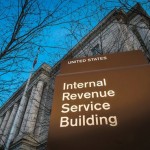IRS Scanning 10-Ks for Tax Data, Report Finds

When CFOs and accounting standard-setters refer to the “users” of corporate 10-Ks, they usually mean investors, research analysts and rival companies. But new research suggests that another kind of user has been taking a keen interest in their companies’ annual reports: the Internal Revenue Service.
In fact, corporate taxpayers may have gotten wind that the IRS was increasingly downloading their 10-Ks starting in 2006, when the Financial Accounting Standards board issued an interpretation (FIN 48) that required more information about uncertain tax positions (UTPs), says one of the researchers, Jeffrey Hoopes, an Ohio State accounting professor who also does research for the IRS.
As a result, companies scaled back on the verbiage and numbers concerning their tax uncertainties in the notes to their 10-Ks, according to the study, “Reading the Roadmap: IRS Attention to Financial Statements.”
Conversely, corporations started becoming more forthcoming about their UTPs when their managers perceived that the IRS was getting the same information via a new section of their corporate tax returns, Schedule UTP, that the IRS began issuing in January 2010.
“What we actually find is that when firms think their disclosures are less useful to the IRS, they provide more disclosure,” says Hoopes. Based on that finding, the researchers reason that the reverse would be true: When companies “think the IRS is going to use a particular disclosure, they will provide less disclosure.”
Between 2006 and 2010, the number of 10-K filings downloaded by the IRS soared from a bit more than 5,000 to 45,000, according to the study. Through 2011, the IRS downloading of annual reports also far exceeded that of 8-Ks, Form 4s (Statements of Changes in Beneficial Ownership) and 10-Qs.
The downloading also increased more for firms with positive FIN 48 balances —companies that had established reserves to account for the possibility that that IRS would rule against them on tax disputes.
Such reserves, called uncertain tax benefits (UTBs), are accruals on corporate balance sheets that could have been reported as earnings were it not for the fact that the company felt it could be facing a tax liability.
“Our evidence suggests pretty strongly that the IRS uses FIN 48 information, despite the FASB’s assertion that it would not be all that useful to the IRS,” according to Hoopes. As an example of such assurances, the paper refers to a remark that FASB member Katherine Schipper made at a meeting of the board on May 26, 2006, concerning FIN 48, that “the IRS has a far more detailed and effective ‘roadmap’ in schedule M-3 than it would be provided by any disclosures” in FIN 48.
“The IRS appears to be ‘reading the roadmap,’” however, says Hoopes, and “it appears that they are then going on to ask for more information based on that roadmap.”
Impact on Company Disclosures
Going beyond the finding that the IRS is actively reading 10-Ks for information on UTPs, the paper concludes that the IRS’s activity has an impact on how much companies disclose.
In one case studied by the researchers, the IRS required a company to report a lot more information privately to the agency after it issued schedule UTP. Before the UTP was issued, the only place agents “could read about a firm’s uncertain tax benefits was in the 10-K,” says Hoopes.
But UTP duplicated much of the same information about uncertain tax reserves that’s reported in the tax notes in the 10-K. “Now the IRS didn’t actually have to go to the 10-K,” he says. “They just had their own version that was part of the tax return. And so what we’re finding is that after the IRS actually had that information…they wouldn’t be looking at the [10-K].”
Once the IRS was able to obtain the information via its tax forms and its agents began to consult 10-Ks less frequently, “firms felt freer to have longer footnotes [and] more sentences and numbers in their footnotes,” he said.
Extracting information from the tax footnotes in 10-Ks, the researchers found that companies did indeed write longer sentences and report more numbers the less their management thought the IRS was looking at UTBs in their annual reports. “Are [companies] talking in vague terms about things or are they providing specific numbers with different things that led to their taxes?” Hoopes asks, explaining what he and his colleagues were looking for in the corporate data.
To find out which financial reports the IRS was paying attention to, the researchers used a dataset that tracked web traffic on the SEC’s EDGAR servers from 2004-2012. As EDGAR users access documents, a log file tracks the IP address of the requesting users. To preserve the privacy of individual users, the SEC replaces the final octet of numbers of the users’ IP address in the log file with three unique letters.
The researchers “were able to pinpoint IRS downloads using the truncated IP address of the downloader,” Hoopes said, noting that none of the data on which the report was based was provided by the IRS.
The other researchers were Zahn Bozanic, also of Ohio State University, and Jacob Thornock and Braden Williams, both of the University of Washington.
Source: cfo – IRS Scanning 10-Ks for Tax Data, Report Finds





























